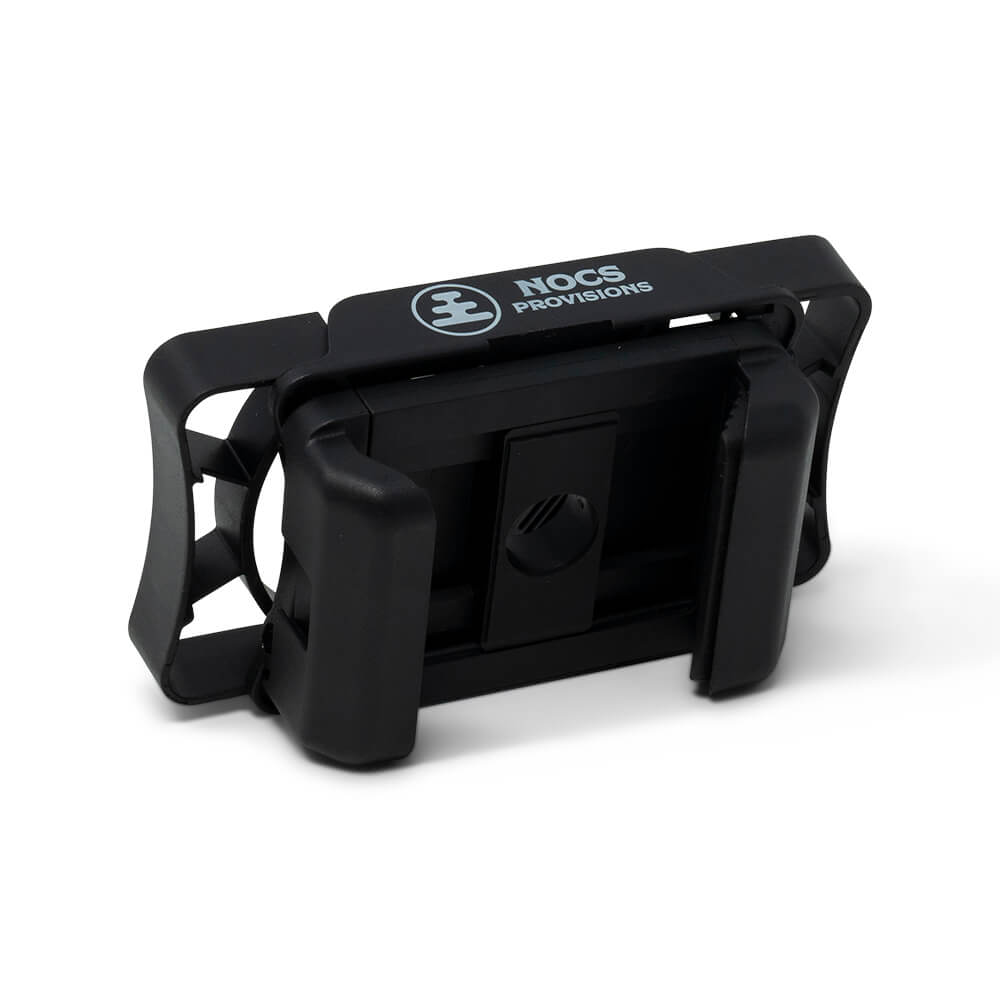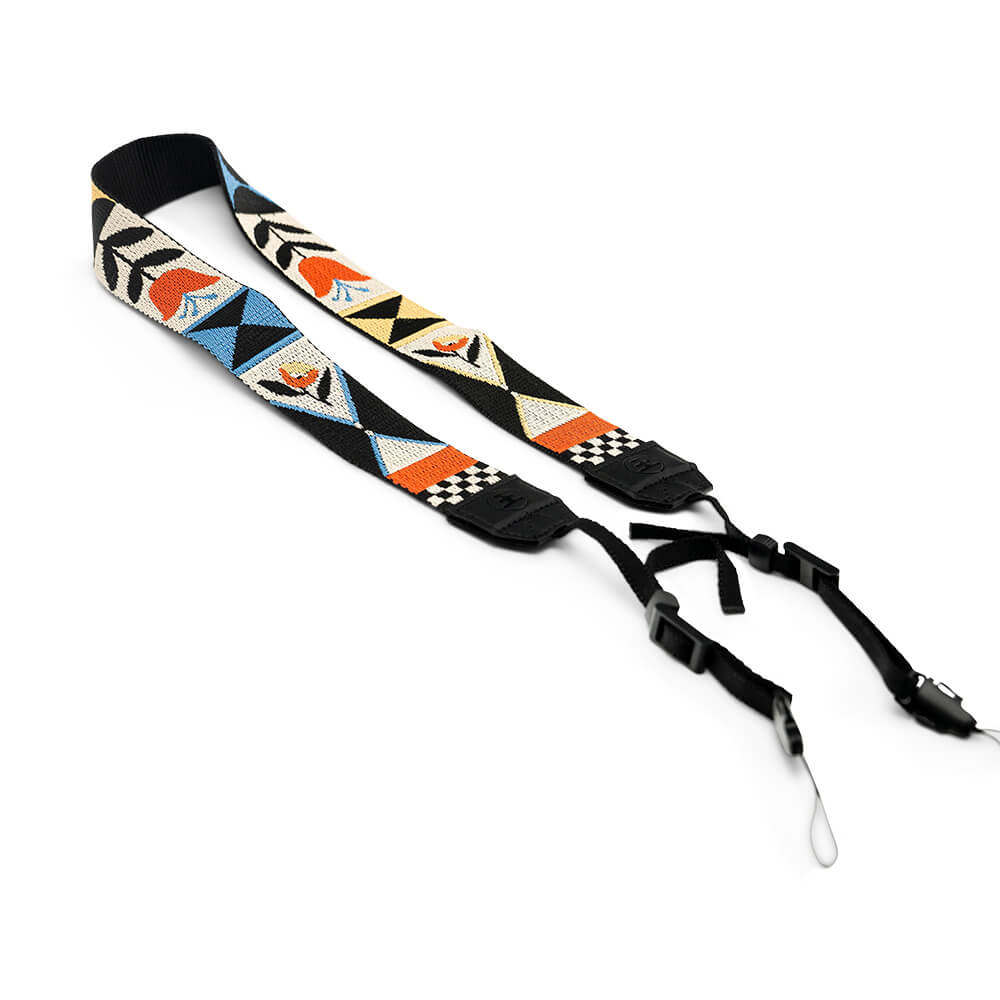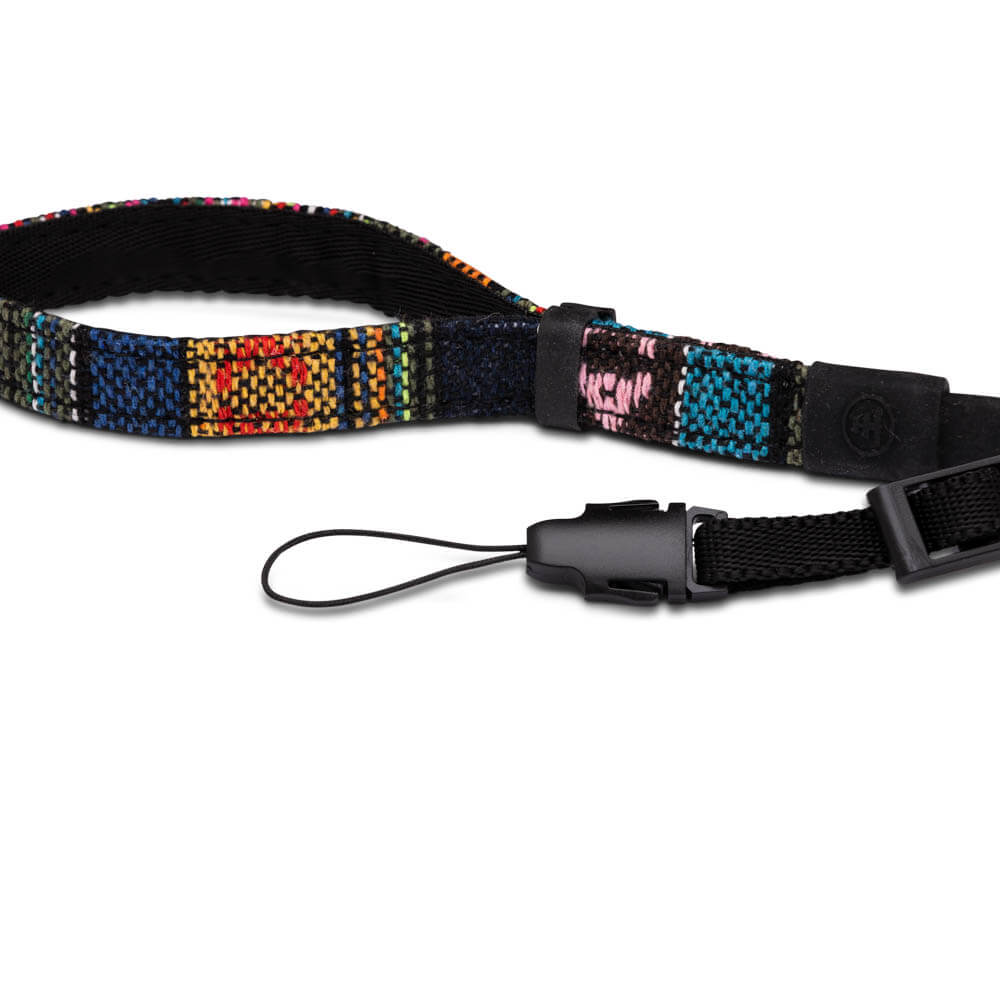Nocs Provisions
Goes to the Tongass
Day One
It was just after three in the afternoon by the time our five enterprising young seafarers and furry Australian shepherd
sidekick cast off lines from the fishing village of Sitka. Armed with two sets of Nocs binoculars, along with a monocular and
microscope attachment, the girls, ages 9, 7, 5, 3, and 1 (I’m not making this up - our two separate Alaskan and Bay Area
families completed an exercise in skip-counting by twos) were geared up for four days off the grid, exploring the world’s
largest intact temperate rainforest.
Also, we promised our kids S’Mores.
A salve of what locals called “liquid sunshine” washed over the harbor as our 42-foot craft ticked past wooden salmon
trollers.
Despite the rain, the three older girls remained on the flybridge sharing the binoculars - the “banana slug” field issue
8x32s, and the coral red 10x42 pro issue. They had been told by the adults that their optics were waterproof, and seemed
determined to test the assertion.
Meanwhile the smaller ones remained inside with Bandit, three-year-old Quinn devoted to wiping down her cardinal red 32x
monocular, which she called her “looking tube,” and Aurora hanging with mom while the dog paced about in his checkered life
vest.
As we turned into Sitka Channel, Lea extended the eye pieces, and focused on an eagle perched on a green channel marker, while
Kiki trained her lenses on a sea lion hauled out on a rock.
“Sun!” Lea squealed, with all the excitement of a five year-old visiting Alaska for the second time in her life, pointing at a
patch of blue to the south. Fresh up from Marin, she had her heart set on seeing the flukes of a humpback.
“That’s a sucker hole,” said Haley, the oldest of the bunch. A shred of blue sky giving the false impression that the sun
would come out soon.
“Where are the whales?” Lea asked, undeterred by the incomprehensible debrief.
“Farther out in the ocean,” Haley explained, clearly happy to have a younger kiddo to educate. “They’re too big to come near
town.”
The sour smell of fish wafted over the boat as we cruised by seafood processors. Behind us our 12-foot skiff, which the girls
called “Banana Float,” bounced in the waves. We passed beneath the bridge, threading a set of islands and heading toward
Goddard Hot Springs, 15 miles due south. After two nights on anchor near the thermal springs, our plan was to stay in the
Forest Service’s Allan Point Cabin north of Sitka for our last night.
Off our stern town vanished into the fog. Bars on our phones dropped like autumn leaves, until SOS occupied the upper
right-hand corner. The wind and swell increased as we neared open water. Finally convinced the binoculars were waterproof -
“they don’t even fog up!” Haley exclaimed - the three girls slipped into the salon, where Quinn and Aurora munched on chips
and playing cards in turn.
Not to be thwarted in her hunt for a whale, Lea used a paper towel to wipe condensation from the windows, pressing the lenses
of the pros to the glass. Haley was right - for reasons we collectively mused on, the lenses of the binocs themselves failed
to fog up. So long as we kept the windshield cleaned, Lea could see fine.
“Whale breath looks like fog,” Kiki said. “So it will be hard to see.”
At 17 million acres, an area about the size of West Virginia, largely covered in mist, America’s largest national forest
resisted seeing, that was for sure. But these lenses, each about an inch and a half across, allowed us depth rather than
breadth, snippets into the vastness.
The adults on board were unanimous that these snippets might as well be appreciated from volcanic hot springs.
On the other side of Long Island the swell increased. Waves began to stack up in the westerly. We took it slow, cruising at
about 7 knots. First Lea, then her mother grew pale. The ginger ale and dramamine came out.
Following a brief kaffeeklatsch, we decided to forego the pleasure of the springs in favor of Pirate’s Cove, a snug anchorage
near a pristine white-sand beach that lent itself to tales of Alaskan buccaneers burying treasure from the northern climes.
After dropping the hook we killed the engine, brewed coffee, and pulled in the Banana in preparation for forays to the beach.
Meanwhile, from the flybridge, Lea’s father sent up the drone, and quickly crashed it into the treetops of yellow cedar and
spruce.
We boarded the boat for a drone recovery mission, weaving the skiff through whorls of bull kelp. The grown men commandeered
the binoculars from the girls to search the trunks for any sign of the craft, the girls silent as we used the tools for real.
And there it was, the drone, tumbled into a bed of moss. We dutifully returned the binocs to the kiddos, who now held them
with a new appreciation: the adults liked them too!
As we prepared to launch a trip to the beach, Kiki picked out a raft of otters floating on their backs, including a mother and
her pup. She handed me the pros, and I made out the slick, glistening fur of the pup, who looked on as his mama floated
nearby.
I turned to scan the beach for any sign of brown bear, and swore that we’d be in the clear, considering that the beach was on
an island. We started bringing kiddos to land, setting crab pots along the way. And there they were, a clean set of bear
tracks that the most recent tide cycle had yet to erase.
Singing a steady off-key course of 80s music, sure it would scare off any ursine, we moved slowly along the fringe of the
forest, the dog working the perimeter and sniffing about, while Rachel and the girls picked salmonberries to freeze for the
winter. Farther back in the trees fishermen had strung seine netting between the branches, the mesh fiber flecked with
aquamarine lichen the girls inspected with the monocle lens attachment. We had never thought to bring a microscope along
before.
Berry pickers became net climbers, before a harder rain set in. We set off a few fireworks in honor of the pirates before us,
and were all relieved to board the skiff back for hot quesadillas on the boat and rousing games of Uno.
Day Two
We woke early to a mist of rain. The Tongass was living up to its reputation.
Nevertheless, the girls suited up in their fluorescent rain gear, binoculars slung round their necks, eager to check crab pots
for Dungeness. The Banana Float nudged the swim step, making rhythmic knocks as wavelets worked their way into the anchorage,
matching the enthusiasm of the Littles.
Lea and Haley used the binocs to pick out the cherry-red buoy attached to the two crab traps. We pulled them - nothing save
for a starfish or two. Back on the boat we hauled the anchor, and made the decision to cut across Sitka Sound, in hopes of
making it to Promisla Bay, about five miles to the northeast.
This time folks had gotten wise and popped pills for the crossing, which meant that just about everyone passed out as if
knocked on the head. The timing worked perfect, a bunch of sleeping beauties waking as we entered gorgeous Promisla Bay, site
of an ancient Tlingit fishing camp with a crushed shell canoe haul-out and babbling stream.
Not far from the beach we dropped anchor. The sun broke through the clouds, this time for real, lighting up the crescent of
white sand. After a scan of the beach we made a trip in, but came back after spotting the spout of a whale a few hundred yards
from our boat. The adults took turns bellowing, “THAAR SHE BLOWS!” while the girls begged to go closer in the skiff.
Bandit stood on the prow, a furry dappled bowsprit, barking when the whale sounded, its breath smelling of decaying fish, for
good reason. It wasn’t until Jordan shared with us his drone footage that we fully recognized just how small we were alongside
what was a gray whale, and not a humpback. The behemoth’s mottled gray bulk accounted for perhaps ten or our small boats. Not
only that, but Jordan managed to capture footage of the whale pooping, and this thrilled the kids to no end.
We all fell asleep to promises of sun the following day, and the cabin for our last night.
Day Three
Leaving Promisla Bay, we emerged into Sitka Sound, in the shadow of the volcano. We slowed the boat to set a halibut skate,
spooling out a string of 15 hooks that would soak overnight in hopes of a halibut or two when we pulled it. We dropped two
buoys, and marked the spot on the chart, before turning due east in the direction of Allan Point Cabin.
Sun glinted off the water as we slipped into Nakwasina Sound. Haley’s keen eye spotted a herd of blacktail deer in the sedge
grass nibbling seaweed. We slowed and moved closer. With a note of desperation that embarrassed me, I asked Haley for a turn
with the binoculars, working the wheel until the lenses sharpened the nubs of a button buck, threads of seaweed draped on
either side of his jaw as he munched. What a sight.
Watching her run the lenses along the beach, I reflected on how the coral color would fit into my camouflage hunting get-up.
The better optics would be worth it, I decided. I’d have the last laugh with my pink binoculars when I came home with meat for
the family.
The five girls made a clutch on the bow, running the lenses through the trunks in search of the cabin, our final destination.
Then a scream went up into the air.
“Quinn dropped her looking tube!!”
Alas it was true. Of all the things the monoculars could do, they could not float. She writhed on the deck in a sad
performance. We promised to let the “looking tube’s inventor” know that it needed a life jacket, before comforting her with
stories of crabs peering through the lenses on the ocean floor, using the equipment to scout for food. After some time she
quieted, with the help of mild salsa and lime-scented nachos.
We turned into the small bay, and Lea picked out the cabin. Thankfully, it was high tide, allowing us to unload gear from the
skiff high up on the beach. The .22 came out, and we tacked targets to the trees, the bullets making snaps as the girls fired.
To save herself a trip, Haley used the field binocs to glass downrange to see where she hit the target.
“Not bad, kiddo.” Two neat holes just to the left of the bull’s eye.
As the sun lowered we stood on the deck of the cabin watching for orcas. We cooked veggie shish kabobs over the open fire,
followed by the S’Mores we had been promising them all along.
Day Four
The next morning our idyll with the yellow star ended. Rain set in once more.
We loaded up the boat, scooped up a hefty Dungeness crab in the trap, which promptly clawed Haley, then set off to pick the
skate in the Sound. When we couldn’t locate the buoy, the girls took it upon themselves to scan the waves with the two
remaining sets of magnification (the Inspector lens had been repurposed into an intimidating Victorian monocle of uncertain
usefulness). Haley found the buoy, bouncing among the waves.
With a gaff hook, Jordan leaned over to try and seize the buoy while Quinn kept an eye on the back deck. I steered as close as
I dared without tangling the line in the prop. We heard a splash.
“Mr. Jordan go-ed in the water,” Quinn reported matter-of-factly. “All the way in the water,” she clarified. And indeed he
had, taking a stick of stainless steel railing with him.
We took the boat out of gear, allowing Jordan to heave himself up on the swim step, where he gamely offered to swim to the
buoy since I clearly couldn’t steer us correctly.
We were able to catch the line, and Jordan heroically pulled the skate shirtless, soaking wet, bringing up two 50-pound
halibuts from the depths, fish needing no magnification at all.
We fileted on the back deck as we steered for home, Haley taking particular pleasure in eating the claw of the crab that got
her. The two sets of binoculars sat at the ready on the binnacle board by the front windows, where they would stay even after
we tied back up in the harbor and carted our things up the ramp. Because this adult, for one, had no intention of losing
either the field glasses or pro issues to the chaos of land. After all, hunting season was coming-on fast, and I still
recalled that beach filled with deer in Nakwasina.
And this time, I wouldn’t have to fight Haley for the Nocs.








